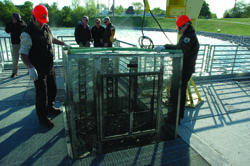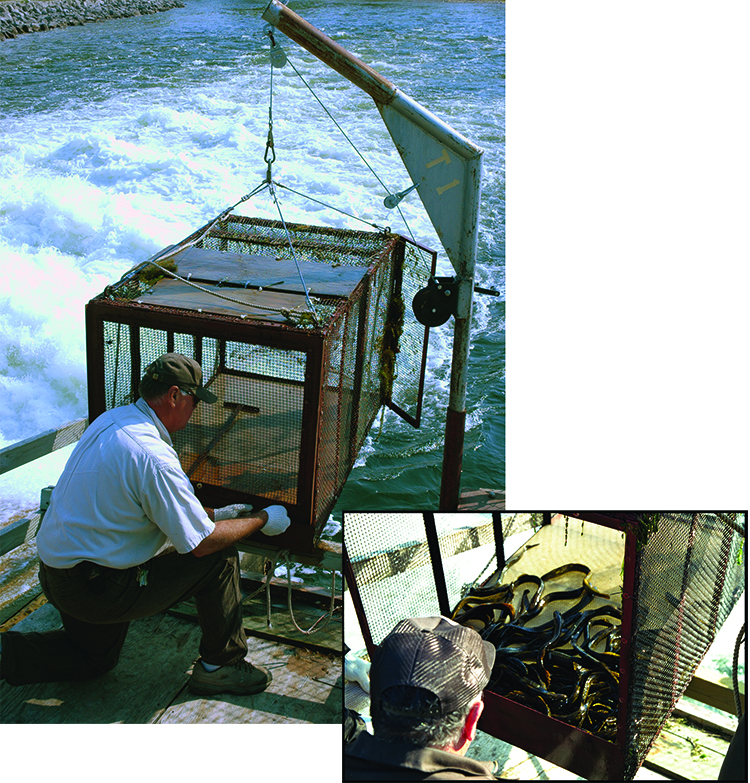Sea Lamprey Traps

Sea lamprey traps are an important component of the sea lamprey control program. Traps are carefully designed to capture either juvenile sea lampreys as they migrate from tributaries to the open lake to prey on fish, or adult sea lampreys as they return to tributaries to spawn. Scientists are testing new trap designs and studying sea lamprey behavior that may be exploited to increase catch. In addition, scientists are evaluating the effectiveness of baiting traps with pheromones, odors sea lampreys give off to attract mates, and investigating the use of alarm cues and repellants, which are odors that cause a flight response. Both attractant and repellant odors might help boost trapping effectiveness.
Trapping juvenile sea lampreys

After larval sea lampreys metamorphose into juveniles, they are vulnerable to capture as they migrate downstream to the lake to feed on fish. Juvenile traps typically consist of nets or other removable devices that are placed in tributaries when juveniles are migrating. Trapping juveniles removes sea lampreys during the part of their life cycle that immediately precedes their lethal, predatory stage. Since juveniles have a high probability of harming fish if not removed during their downstream migration, trapping this life stage is potentially valuable to sea lamprey control, providing that sufficient numbers of juveniles are captured. Ongoing research on juvenile trap designs and tactics is expected to enhance juvenile trapping and provide additional sea lamprey control.
Improving trap effectiveness with pheromones and alarm cues

Sea lampreys have an extremely well-developed sense of smell; they can detect scents given off by other sea lampreys at very low concentrations. One pheromone, released by larval sea lampreys, helps adults determine which tributaries are suitable for spawning by indicating the existence of larvae in that tributary. Another pheromone, given off by spawning males, attracts a female to a mate. Scientists have demonstrated that baiting adult traps with sea lamprey pheromones can enhance trapping efficiency in some tributaries. Alarm cues are odors injured or dead and decaying sea lampreys emit that serve to warn live sea lampreys of danger. This "smell of death" causes a powerful flight response away from the odor. Alarm cues could be used to cause sea lampreys to avoid areas that are difficult or expensive to treat with lampricides or that have suitable spawning habitat and instead "push" them toward traps, areas that have poor spawning habitat, or areas that are easy and inexpensive to treat with lampricides.

